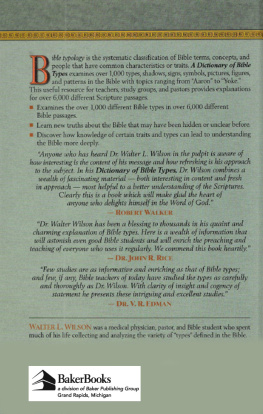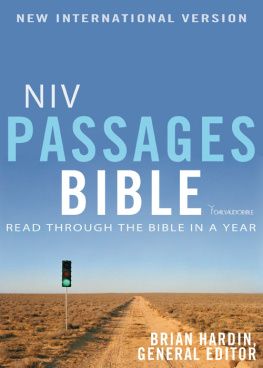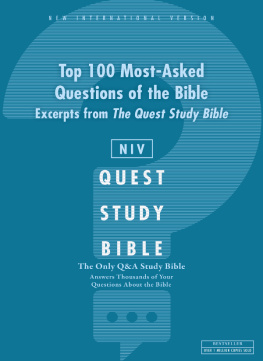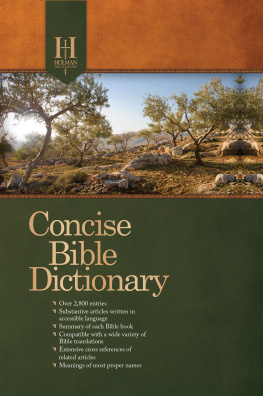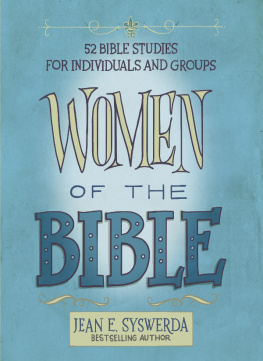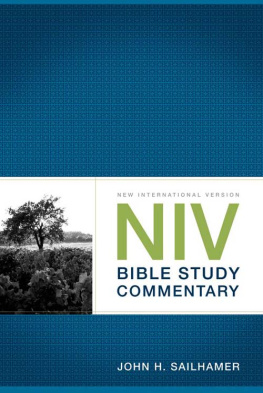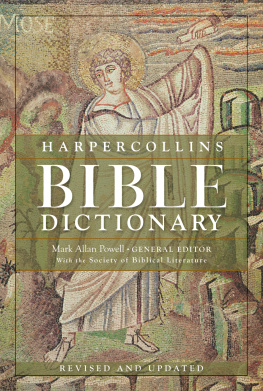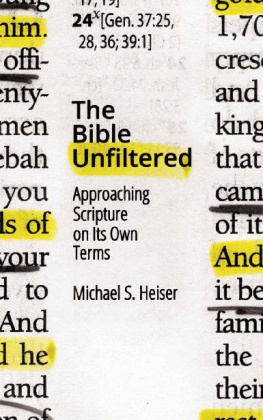
Published by Baker Books
a division of Baker Publishing Group
P.O. Box 6287, Grand Rapids, MI 49516-6287
www.bakerbooks.com
Ebook edition created 2013
All rights reserved. Except for brief quotations in printed reviews, no part of this publication may be reproduced, stored in a retrieval system, or transmitted in any form or by any means (printed, written, photocopied, visual electronic, audio or otherwise) without the prior permission of the publisher.
ISBN 978-1-4412-3684-5
Library of Congress Cataloging-in-Publication Data is on file at the Library of Congress, Washington, DC.

Because typology is a subject of much discussion and because there are differences of opinion concerning the meaning of types, it has seemed best to divide the material in this book into three groups.
- The passages marked with the letter (a) are pure types, plainly described as such and referred to as such in the Scripture. There is no question about them.
- Those marked (b) seem to be types because of their use and because the evident meaning they convey.
- Those marked (c) are passages in which there may be a question as to whether or not they are types. The descriptions given of these passages are offered only as suggestions of lessons which may be learned from them. The writer claims no superior knowledge whatever in regard to their meaning and will be quite happy for others to have their own thoughts about them. There will be no spirit of criticism in the matter.
Sometimes a number of separate words are used to describe more or less the same thing. These have been designated as types, symbols, signs, shadows, representations, pictures, figures and patterns, in order to make them more lucid for the average reader. The author has refrained from making final decisions in these passages under class (c) and has left it to the student to settle in his or her own mind as he or she pursues their study.
In presenting this compendium of types, shadows, signs and symbols, an effort has been made to furnish, for the Bible student, a fairly complete explanation of the Scripture passages. I realize that the descriptions do not fully cover the subject, for the Word of God is boundless, limitless and measureless.
If the reader should find other symbolical meanings than those given in the book, it will be a cause for thanksgiving. If he or she should differ in his or her opinions from those herein presented, there will be no criticism. If anyone should feel that the explanations are not sufficiently clear, then I shall hope that he will add to the information given.
A proper understanding of the meanings of types in the Bible will add greatly to the understanding of the text and will greatly increase the ability and resourcefulness of the soul winner.
This book is sent forth on its mission of helpfulness with the prayer that through its use, minds will be enlightened, hearts will be refreshed, and lives will be made more useful.
I wish to acknowledge with gratitude the untiring efforts of my two secretaries, Miss Pearl Wisner and Mrs. Grace Longenecker, without whom it would have been most difficult for me to compile this book through the years of study and research. They were my untiring helpers.
Walter Lewis Wilson, M.D., D.D., L.H.D.
Kansas City, Missouri


LESSON ONE
The student should first decide whether the word under consideration is used by the Spirit as a type. Not all objects are types. Care should be used in arriving at a conclusion on this matter lest one distort the Word of God and thus arrive at decisions which were never intended by the Lord.
A safe rule is to ascertain whether an object is said plainly to be a type. When Paul wrote in 1 Corinthians 10:4, They drank of the spiritual rock... and that rock was Christ, we know that the rock in the wilderness was a true type of Christ.
When we read of the good and bad fish in Matthew 13:47, we know that these fish are types though the passage does not say so. The story is a parable intended to teach a lesson. It is needful therefore to learn just what they do represent and also what the net represents.
When we read of the Red Sea or the Jordan, we know this to be a type just because it teaches so many very interesting and profitable lessons.
But even though we decide that an object is a type, there still remains the problem of learning what it represents. Here great care is needed. Let us ask, What constitutes a type? Let us seek an answer by a series of comparisons:
1. There is likeness of appearance as clouds and dust (Nah. 1:3).
2. There is likeness of action as the leopard and Alexander the Great (Dan. 7:6).
3. There is likeness of effect as rain and snow and the Word of God (Isa. 55:10).
4. There is likeness of relationship as nurse and Paul (1 Thess. 2:7).
5. There is likeness of value as gold and the Lord Jesus (Isa. 13:12).
6. There is likeness of position as head and Israel (Deut. 28:13).
7. There is likeness of character as the spider and the sinner (Prov. 30:28).
LESSON TWO
Certain principles and processes are essential in the study of typology. It is Scriptural to study this subject for the writers of the Scripture and our Lord Himself used types constantly for teaching great lessons. As a good knife is of most value in the hands of a skillful surgeon, so the Word of God is most effective when used by those who best understand its hidden meaning. The study of types is illuminating, for the Spirit uses the things which are seen, to teach us concerning the things which are unseen. The study of types equips us with a handy means and method of presenting the truth of God, for types are about us on every hand ready to be used.
Some suggestions for the study of types:
1. Think of the opposite of that which is under consideration; as the golden city (Rev. 21:18) and the gilded city (Rev. 18:16); the lion (Rev. 5:5) and the lamb (Rev. 5:6); the woman clothed in red (Rev. 17:4) and the woman clothed in white (Rev. 19:8).
2. Think of comparisons: great Goliath and little David; Joseph of the Old Testament and Jesus; the river in Ezekiel 47 and the river in John 7.
3. Look up the several occurrences of the type to ascertain how it is used.
4. Learn whether this type is referred to anywhere else in the Scripture as a type.
5. Consider the characteristics of the type being studied as the sea with its greatness, its depth, its restlessness, its size, its waves, its commerce.
6. Think of the lessons which may be learned from the type as the leaves in Isaiah 64:6, how they fade, how they reveal the kind of tree, how they show whether young or old, how they fall from the tree or hold on. By considering these various thoughts, the student will be enabled to quickly and easily learn lessons from the subject under consideration.
If questions should arise in regard to any of the suggestions given, the reader may feel free to address an inquiry to the author. Such communications will receive prompt attention.
LESSON THREE
Quite often an object is used as the same type or a type of the same thing by several writers. This repetition confirms the object as a type and assures us of its true meaning.
Next page
